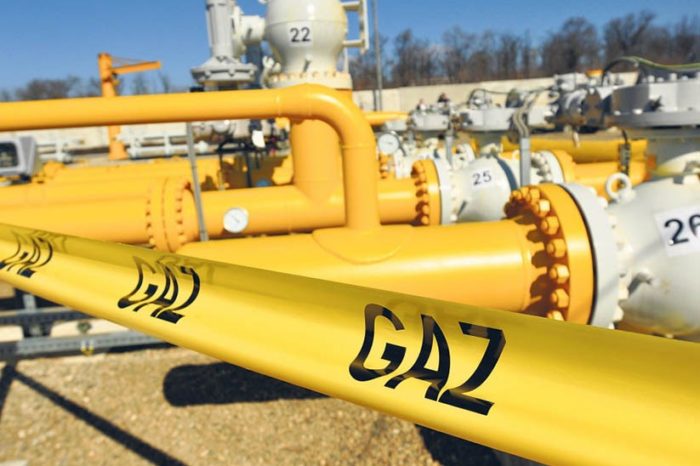Colliers’ predictions proved true: 2023 turned out to be a decent one for the local real estate market. The industrial market remained at the forefront, while investment activity dropped substantially

Romania’s real estate market prepares to end a “decent” year, with intense activity in the industrial sector, but also with a decline in economic dynamic and a significant decrease in investment market activity, as Colliers consultants predicted at the beginning of the year, in their report “Top 10 predictions 2023”. Also in the residential sector, sales volume in the first half of the year was in line with Colliers’ anticipated trend of declining buying interest in the context of high interest rates, but in the second half of the year trading activity recovered amid rising home loans.
“2023 had contrasting themes for the Romanian real estate market, with some good and some not-so-good news, with a significant part of the trends and themes that were evident in the market being anticipated by Colliers consultants at the beginning of the year. Now, with about a month to go before the launch of the “Top 10 predictions 2024” report, we believe that the review of this year is a necessary exercise, which also allows us to review the year just ended. Overall, the themes we highlighted proved true and 2023 turned out to be a decent one for the local real estate scene”, points out Laurențiu Lazăr, Managing Director at Colliers Romania.
Colliers consultants anticipated an “economic slowdown in 2023 without recession”, and this happened. Romania outperformed most European countries, but Colliers’ expectations of 3-4% full-year GDP growth proved too optimistic, with a figure of just over 2% more realistic at this point. Another theme highlighted in the “Top 10 predictions 2023” concerned the increasing relevance of the re-alignment of the global geopolitical order, and the theme of near-/friend-shoring (relocation of activity to countries closer to the end beneficiary or to friendly countries) has indeed become more visible this year for Eastern European countries, including Romania.
Colliers also anticipated that politics would be in the spotlight this year. Politicians appeared to be focused on the busy 2024 electoral calendar rather than on necessary structural reforms, and the fiscal expansionary policies typical of a pre-election period were also visible.
Returning to the more real estate-related themes, Colliers continued to see an increased focus on green/efficient buildings in Romania, which are likely to continue to benefit from increasingly higher rent compared to less old real estate projects.
“We’ve jumped ahead a bit with the assumption that a landlord market is starting to form. While this supposition is still valid for 2024 and beyond, in 2023 we saw only a few areas with such momentum, because spaces in well-positioned green buildings that were highly sought after also had much higher rents than a year and a half ago. The roughly 10% year-over-year increase in asking rents for these Class A offices represents the highest level that we’ve seen since before the global financial crisis of 2008. Moreover, we could see such developments on a much larger scale as developers are unwilling to accelerate construction plans, and 2024-2025 will see a very light delivery schedule”, says Laurențiu Lazăr.
Otherwise, office leasing activity remains acceptable, with new demand in the Bucharest leasing market close to the average of the last cycle, while gross demand increased impressively, most likely to a new all-time high, as companies have postponed some real estate decisions amid the pandemic and the rise of hybrid work. Meanwhile, for the industrial sector, Colliers estimated both an increase in rents, which is also one of the most serious we’ve seen in many years, and a very strong year for leasing activity, also with the potential for a new all-time high.
“For investment transactions, as expected, it was a difficult year. With interest rates at a high level, Romania experienced a similar dynamic to other markets, both in Europe and in other parts of the world. We anticipated that the volume of the real estate investment market would halve from its peak of 1.2 billion euros in 2022, and it seems we were largely right. Yields have also continued to rise, but as we said at the beginning of 2023, the correction is not very strong”, points out the Managing Director of Colliers Romania.
Colliers’ forecasts for the retail market were relatively positive, with the company pointing out that people have returned to stores. However, e-commerce has taken hold at a higher level than before the pandemic. This trend and the fact that Romania is relatively undersupplied with commercial spaces compared to other countries in the region have kept interest in new projects high. A key element for the evolution of the retail sector is the fact that spending power has not declined much in the last two years. Moreover, since the beginning of 2023, wage growth has outpaced inflation again.
Also, in the context of strong consumption, the residential market started to recover in terms of trading activity from the second part of the year onwards. Until then, activity was in tune with Colliers’ anticipated trend of declining buying interest amid high-interest rates. And even though interest rates have not yet fallen, and won’t likely fall until mid-2024, Colliers consultants link the return of growth in home loans and buying interest in the residential market to the idea of stability and the prospect of future declines.
Last but not least, Colliers’ forecasts for the land market also proved largely true, as it was a year in which more discerning buyers targeted opportunities rather than significant accumulations. As a result, it was a highly segmented market, with strong interest in exceptional land and limited activity in less special locations.


















